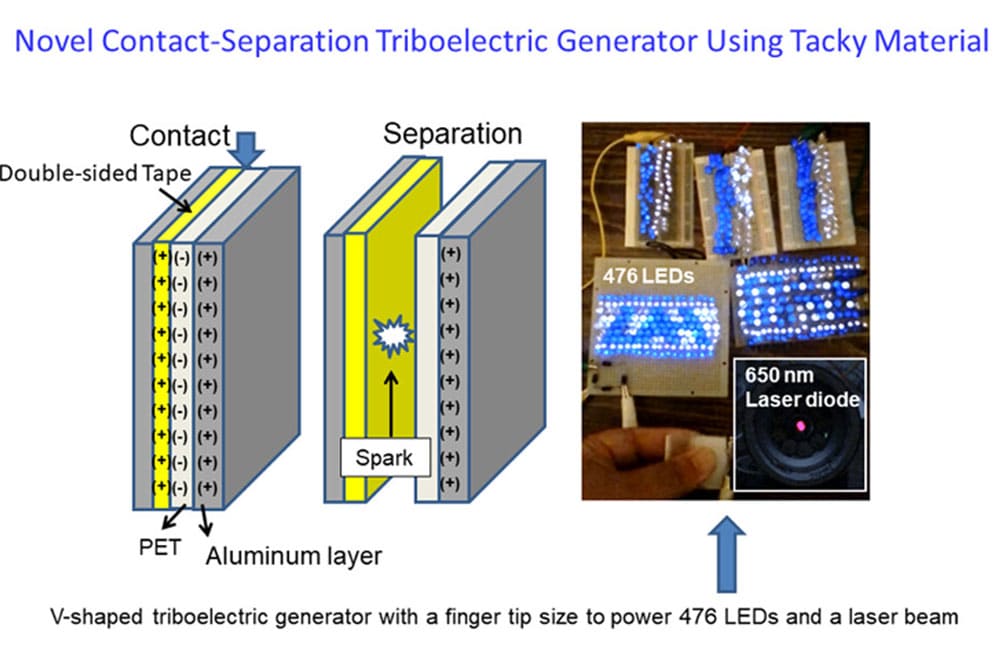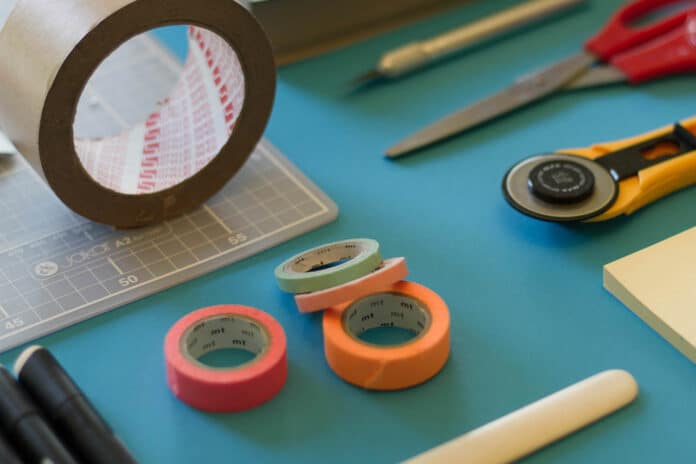In addition to bitterly cold temperatures, winter usually brings dry air and the occasional zap of static electricity. Those shocks can be annoying, but researchers are working to harness that otherwise wasted energy with triboelectric nanogenerators (TENGs) to power everyday devices.
A research team led by Gang Wang from the University of Alabama devised an easy way to manufacture these cheap, tiny generators out of materials as simple as double-sided store-bought tape. Researchers say they can perform on par with previously reported complex versions when it comes to producing electricity.
Over the years, we have seen many versions of triboelectric generators that can transform mechanical energy into electrical energy through the triboelectric effect, which is a form of static electricity. These nanogenerators send this electricity through a circuit to power a device, such as an LED. According to researchers of the new study, many TENG devices are complicated and expensive to make and only produce a few watts of power.

Gang Wang and team say their proposed concept is very cost-effective, uncomplicated, and easy to fabricate compared to existing triboelectric generators. The new design comprises layers of store-bought double-sided tape and plastic film covered with a thin sheet of aluminum metal. Pressing these two layers together and then disconnecting them created a small spark between them. Applying more pressure on the layers could generate more power.
A double-electrode version of the device could even produce a power density of 169.6 watts per square meter, which the team says is 47% higher than that previously reported for other devices. In a series of tests, researchers used the double-sided tape triboelectric generator to light up over 400 lights simultaneously by simply pressing on its layers.
The researchers say that the proposed triboelectric generator concept could help meet the larger power demands for self-powering electronics with simpler and cheaper materials. In addition to powering LEDs or other small electronics, there are many possible use cases for triboelectric nanogenerators, which include wooden floors that generate energy from our footfalls and flexible power generators that harness the ocean’s continuous movement as a renewable energy source.
Journal reference:
- Moon-Hyung Jang, Jacob D. Lee, Yu Lei, Simon Chung, and Gang Wang. Power generation by a double-sided tape. ACS Omega, 2022; DOI: 10.1021/acsomega.2c05457
